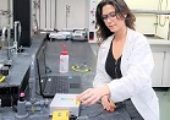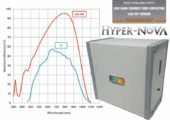MH Park, SH Jeong, HK Seo, C Wolf, YH Kim, H Kim… – Nano Energy, 2017
Abstract
Organic-inorganic halide perovskite light emitting diode (PeLED) as a narrow band emitter is an emerging research field. To overcome limited electroluminescence efficiency of PeLEDs, trap-assisted non-radiative recombination in polycrystalline perovskite films should be reduced and the electron-hole balance in the PeLEDs must be improved. In this work, we investigated a practical way to effectively overcome above-mentioned issues by unravelling additive-based nanocrystal pinning (A-NCP) process using the carefully controlled electron transporting organic material solutions diluted in a volatile non-polar solvent. We found that without affecting the intrinsic crystal structure, A-NCP improved the radiative recombination rate by reducing effective defect density at grain boundaries due to the defect healing effect. Moreover, it induced the improved electron-hole balance in the dominantly p-type CH3NH3PbBr3 based PeLEDs, leading to the highest efficiency of 8.79% ever reported to date among organic-inorganic halide perovskite-based green PeLEDs. Therefore, our work gives the effective approaches for efficient PeLEDs from the investigations of the role of A-NCP incorporating a tiny amount of an electron transporting molecule as an additive to increase radiative recombination rate of polycrystalline perovskite films.
… SP-2155, Acton) and MCP-PMT (R3809U-50, Hamamatsu); and excitation-power-dependent PL by using the same source in continuous wave (CW) mode at 80 K and 300 K. PL spectra were collected using a Blue wave fiber-coupled spectrometer (StellarNET) with a resolution …





